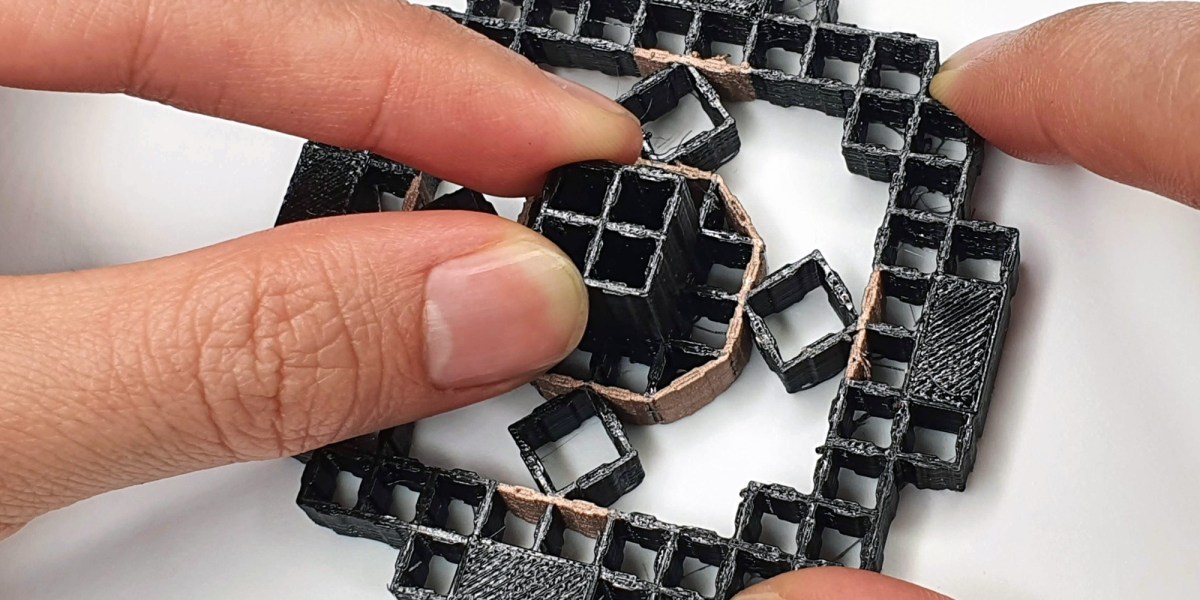 3D-printed materials that sense your actionsInteractive input devices like joysticks or handheld controllers could be simple to produce with a new technique for 3D-printing mechanisms that detect how force is being applied to an object.
3D-printed materials that sense your actionsInteractive input devices like joysticks or handheld controllers could be simple to produce with a new technique for 3D-printing mechanisms that detect how force is being applied to an object. Researchers in the lab of Stefanie Mueller, an associate professor of electrical engineering and computer science, integrated electrodes into structures made from metamaterials, which consist of a grid of repeating cells that may stretch or compress under force. This made it possible to create “conductive shear cells”—flexible cells with two walls made from nonconductive filament and two conductive walls that function as electrodes.
When a user handles the material, the distance and overlapping area between the opposing electrodes changes. Those changes can be used to calculate the magnitude and direction of the applied forces, as well as rotation and acceleration. The technique offers a way to customize controllers and other mechanisms to meet someone’s individual needs.
“This will enable new intelligent environments in which our objects can sense each interaction with them,” Mueller says. “For instance, a chair or couch made from our smart material could detect the user’s body when the user sits on it and either use it to query particular functions (such as turning on the light or TV) or to collect data for later analysis (such as detecting and correcting body posture).
https://www.civilengineering.ai/3d-printed-materials-that-sense-your-actions/

Post a Comment